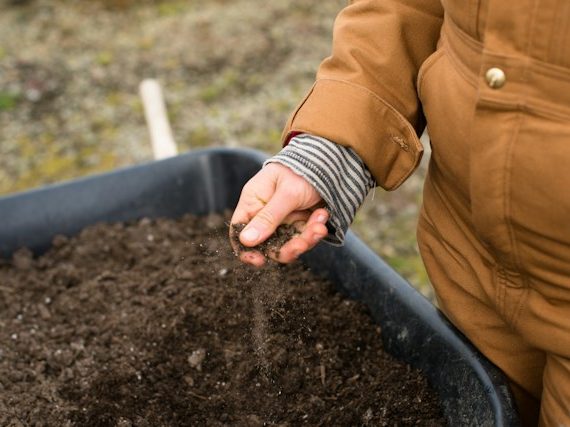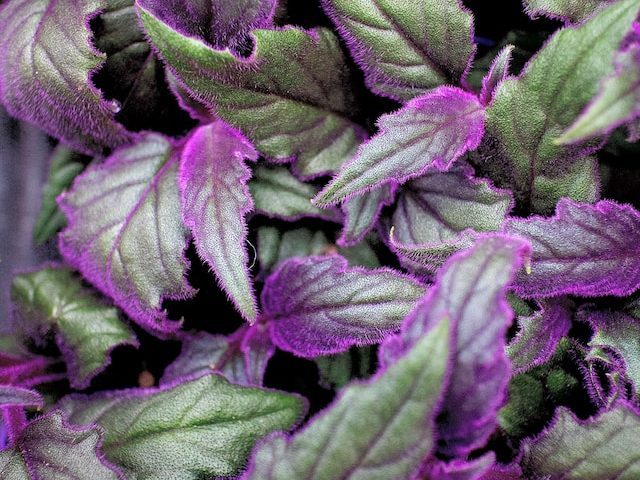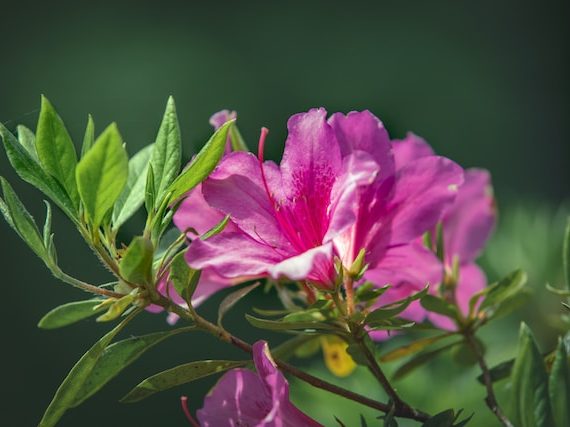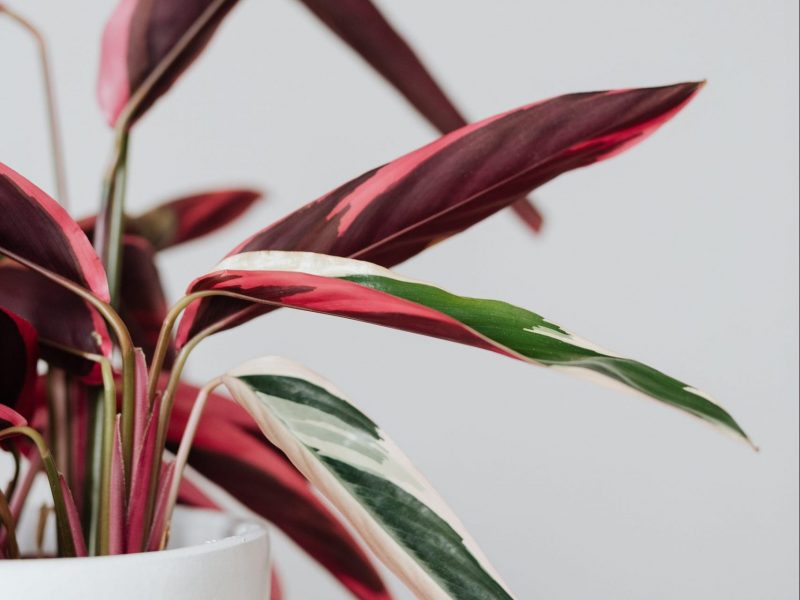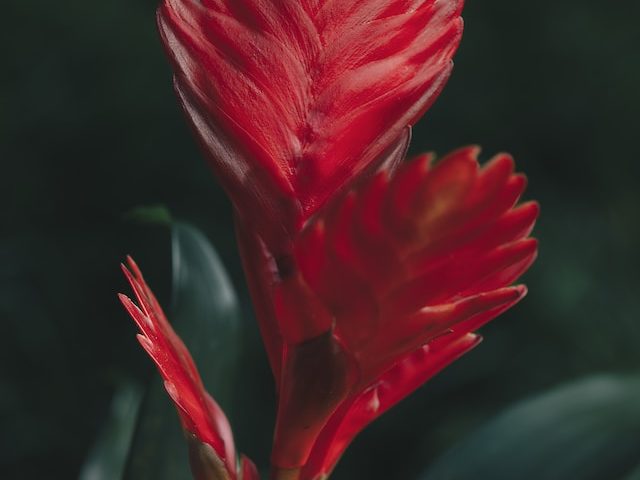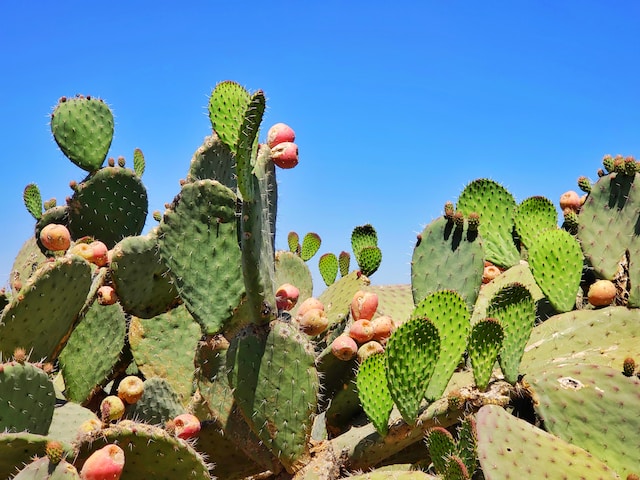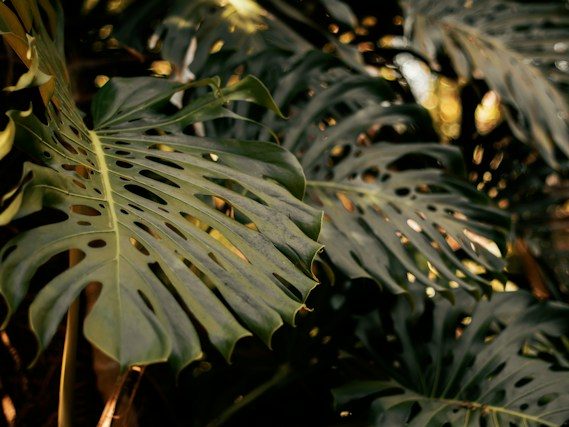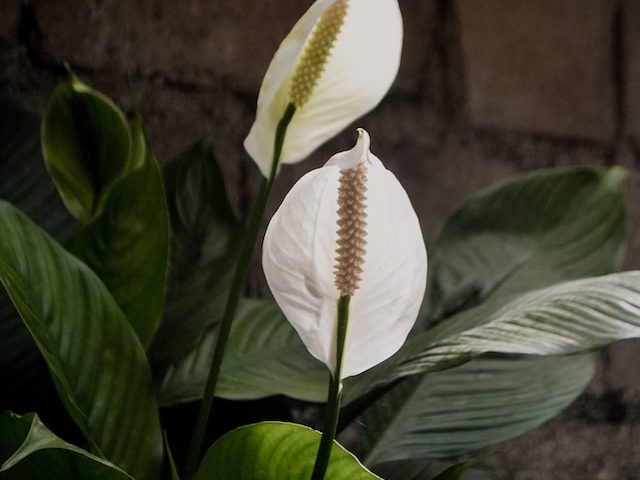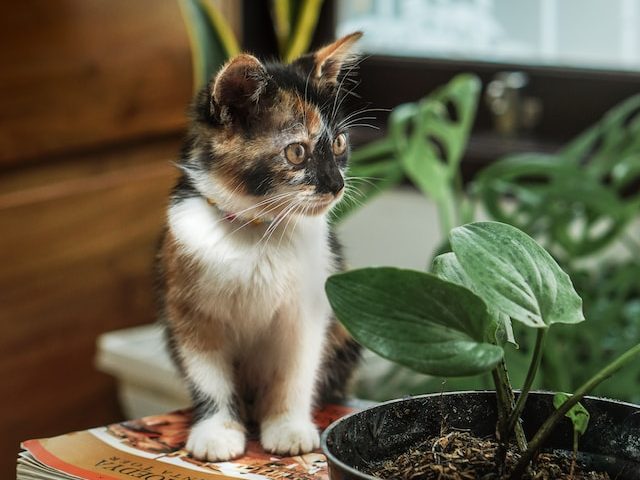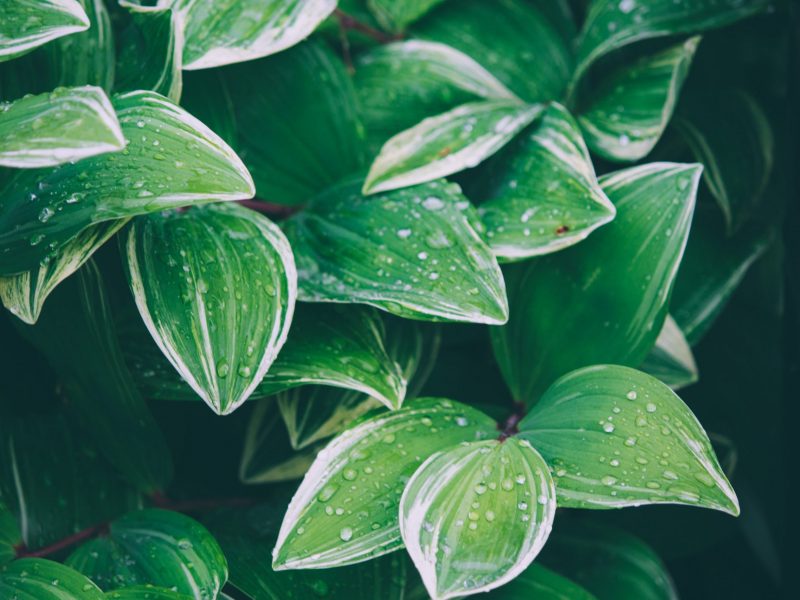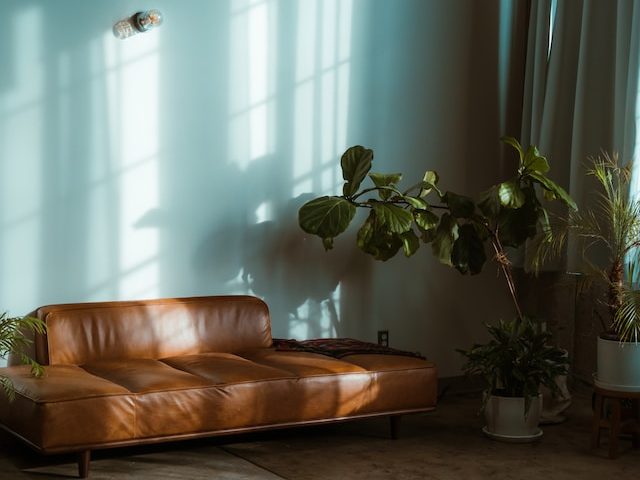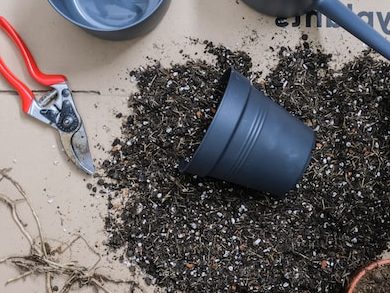Elephant Ear Plant
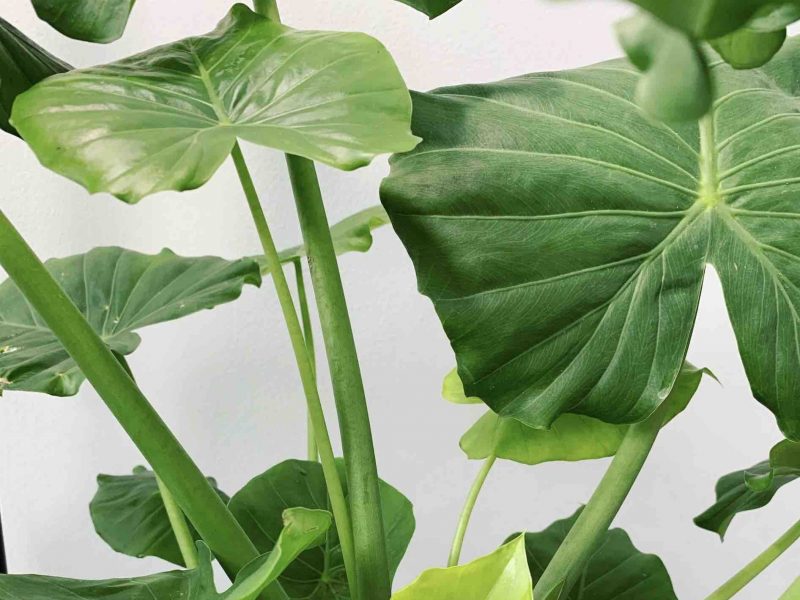
Introduction to the Elephant Ear Plant
The Elephant Ear Plant, known scientifically as Colocasia, is loved for its dramatic, large, heart-shaped leaves. It’s almost like having a piece of the rainforest in your living room.
Native to Asia and the Eastern Pacific, Elephant Ear Plants are accustomed to warm, humid environments. This means that creating the right conditions for these plants may require some extra effort, especially in cooler climates.
Another important detail to note about these plants is that they are also very versatile. They can be grown both indoors and outdoors, making them a great choice for a variety of gardening scenarios and homes.
The Elephant Ear Plant Characteristics
Elephant Ear Plants stand out with their large, robust foliage that resembles the ears of an elephant (hence the name…). Their leaves are not only impressive in size but also come in a variety of shades from green to black, adding an exotic touch to your space.
When it comes to size, this plant can grow up to 8 feet in height, so isn’t the best choice for smaller spaces or homes as they will mature to that height in the right environment.
Elephant Ear Plants bloom occasionally, producing small, yellowish-white spathes. But it’s their giant leaves that are the real show-stoppers so don’t get too hung up on trying to make your plant bloom (or get disappointed if it doesn’t). Each leaf can grow up to 60 cm in length and 40 cm in width!
It’s important to note, however, that the Elephant Ear Plant contains calcium oxalate crystals which can be toxic if ingested. While it makes a beautiful addition to your home or garden, make sure to keep it out of reach of children and pets.
What Makes Elephant Ear Plants Unique?
Elephant Ear Plants are unique not just for their size but also for their resilience. Although they prefer warm, humid conditions, they can also tolerate a bit of neglect. This makes them a practical choice for gardeners who may not have a lot of time to devote to plant care or don’t have the best track record of keeping their plants thriving.
Physical Appearance of Elephant Ear Plant
Its name derives from the large, heart-shaped leaves bearing a resemblance to an elephant’s ears.
- Leaves: The Elephant Ear plant boasts large, heart-shaped leaves, often with beautifully veined patterns. This foliage can reach a size up to 1 metre in length, giving the plant its majestic appeal.
- Stems: The plant’s robust and rigid stems support the large foliage, often extending to a height of 2-3 metres.
- Colour: The colour palette of Elephant Ear plants ranges from vibrant greens to dark purples, depending on the variety.
Elephant Ear Plant Genera
Colocasia, Alocasia, Caladium and Xanthosoma are the most common genera of Elephant Ear plants, each with distinct leaf shapes and sizes.
- Colocasia: Heart-shaped leaves with pointed tips that grow up to 1 meter each
- Alocasia: Arrow or shield-shaped leaves which grow between 20cm – 1 meter
- Caladium: Heart-shaped leaves ranging from 20cm – 1 meter which come in a vast variety of colours
- Xanthosoma: Sagittate (arrowhead-shaped) leaves which also grow between 20cm – 1 meter in size
Popular Varieties of Elephant Ear Plant
- Colocasia esculenta: Also known as the Taro plant, this variety stands out with its large luscious green, heart-shaped leaves. It’s most commonly used in landscaping due to its robust nature and ability to grow in water.
- Colocasia gigantea: True to its name, this Elephant Ear variety features giant, light green leaves and can reach up to 5 metres in height. It’s perfect if you’re looking to make a bold statement in your garden or home.
- Colocasia ‘Black Magic’: This variety is a true spectacle with its dark, almost black foliage. It’s sure to add a dramatic touch to any room!
When choosing the right variety of Elephant Ear plant for you, consider your available space, lighting conditions, and personal aesthetic preference. Each variety brings its unique characteristics and requirements so it’s important to look at the conditions in the space before selecting the right plant.
Natural Habitat of Elephant Ear Plant
The Elephant Ear Plant originates from the tropical rainforests of South and Central America, Asia, and Australia. Here, they thrive in warm, humid conditions, surrounded by diverse vegetation. Mimicking these conditions to some extent will help your plant thrive in your home (reaching the humidity of a rainforest is not only difficult to do at home but it won’t be very pleasant for you to live in!)
Elephant Ear Plant Sunlight Requirements
Elephant Ear plants are sun-loving houseplants. Their sunlight requirements are moderately high, and they thrive best in a bright, indirect light environment.
Although accustomed to the bright light, a sudden increase in exposure can cause ‘sunburn’ to the leaves so be careful with intense sunlight during the height of summer. Slowly acclimatising your plant to a brighter spot is the most effective way to prevent this, as well as keeping your plant away from direct rays in summer. You can get away with your plant receiving some direct sunlight during winter as the sun is a lot weaker and the risk of sunburn is low.
Another tip when it comes to light level and your Elephant Ear plant is to rotate it regularly. This not only ensures even sunlight across your plant but it will help prevent it from reaching the light which can make it grow lopsided and become unstable. With such large plants, this is especially important to prevent them from falling over.
Watering your Elephant Ear Plant: When and How Often
Elephant Ear Plants, like most tropical plants, thrive in moist but not waterlogged conditions. It’s vital to strike a delicate balance to ensure your plant’s health and growth.
How often should you water your Elephant Ear? The answer truly depends on the specific circumstances surrounding your plant. Key factors include the time of year, the humidity level in your space, and your plant’s particular needs. This is why a strict watering routine can’t ever be accurate as there are so many fluctuating factors that impact how quickly the soil dries out.
During the summer growing season, you may need to water your plant as often as once or twice a week. However, during the cooler months, your Elephant Ear plant will require less frequent watering, perhaps once every two weeks. Always ensure the top inch of soil is dry before re-watering to avoid overwatering and potential root rot.
Watering Tips for Your Elephant Ear Plant
- Always water your plant in the morning: This gives a full day for the water to evaporate before the cooler evening temperatures set in. If the leaves become very cold while they are damp, this can lead to them rotting.
- Use lukewarm water: Elephant Ear plants are not fond of cold water. Using lukewarm water is less of a shock to the plant’s system but avoid hot water as this can burn the root system.
- Water deeply: When you water your Elephant Ear plant, make sure to do it thoroughly. The water should reach the bottom of the root zone to ensure all the roots can access the water.
Temperature and Humidity Requirements
The Elephant Ear Plant thrives in warm temperatures and high humidity. Ideally, these plants prefer temperatures between 15-30°C and humidity levels above 60%. Let’s examine these two parameters of Elephant Ear care in more detail.
Ideal Temperature Range
Elephant Ear Plants enjoy warm, consistent temperatures, ideally between 15-30°C (59-86°F). Any temperature below 10°C (50°F) can cause harm to the plant, resulting in yellowing leaves, your plant losing leaves or, in severe persistent cases, plant death.
During the winter months, when temperatures can drop, it’s essential to bring your Elephant Ear plant indoors if you are growing it in your garden.
Humidity Requirements
High humidity is a must for your Elephant Ear Plant and is a key factor in preventing issues from forming on the leaves. These plants thrive in environments where the humidity is above 60%.
If you live in a dry region, achieving this level of humidity might be a challenge. But don’t worry! There are several ways to increase humidity levels for your plant. These include misting the leaves regularly, placing the plant on a tray of watered pebbles, or investing in a home humidifier.
Remember: Elephant Ears are sensitive to their environment. Consistency in temperature and humidity is key for their survival and growth.
Fertilizing your Elephant Ear Plant
Feeding your Elephant Ear Plant appropriately is often a forgotten element of plant care routines but is quite an important one to achieve consistent lush growth. Fertilisers not only provide essential nutrients but also help in maintaining the vibrant green hue of its magnificent foliage.
When should I fertilize my Elephant Ear Plant? Only ever fertilize during the growing season (spring and summer) as this is when your plant has the highest nutrient demand. This period should see regular applications of fertiliser once a month. Hold off feeding during autumn and winter as this can cause damage to your plant during its dormant phase.
What Type? A balanced, water-soluble fertiliser (rated 20-20-20) is recommended. This signifies equal parts of nitrogen, phosphorus, and potassium, all vital for your plant’s growth.
How Much? Aim for a half-strength solution to avoid nutrient burn. Always remember, ‘less is more’ with these plants as you can’t reverse the impact of over-fertilization.
Choosing the Best Soil for your Elephant Ear Plant
Choosing the perfect soil for your Elephant Ear Plant is very important as not only does the soil support your plant physically but also provides nutrition, water, and air to the root system.
Drainage is Key: Elephant Ear Plants prefer well-draining soil as overly saturated soil can lead to rotting roots, a nightmare for any plant parent. A mix of loam, sand, and peat moss often works well for these plants.
Nutrient-Rich Soil: These plants are heavy feeders and thrive in nutrient-dense soil. An organic compost or slow-release fertiliser can be added to the base soil to ensure your plant gets all the nutrition it needs.
Recommended Soil Mix
Here’s a simple, effective recipe for an Elephant Ear Plant soil mix:
- 1 part loam
- 1 part sand or perlite (for better drainage)
- 2 parts peat moss or coco coir
- Some organic compost or slow-release fertiliser
If you don’t want to make your own soil mix, then a well-draining pre-made mix will suffice! Make sure to choose a high-quality one to ensure good nutrition.
Pruning and Maintenance Tips for an Elephant Ear Plant
To keep your Elephant Ear Plant looking its best, regular pruning and maintenance are essential. Not only does this promote healthier growth, but it also helps to keep your plant in the right shape for your space and helps to prevent disease. Many plant parents find pruning daunting but as long as you know what you’re doing, it doesn’t have to be a scary experience at all! Here are our top pruning tips:
- Pruning Frequency: Elephant Ear plants typically need pruning every 2-3 months during the growing season. Keep a close eye on your plant to assess its needs and prune more regularly if you notice issues.
- Removing Damaged Leaves: Any yellowing or browning leaves should be removed immediately. This not only improves the plant’s appearance but also prevents the spread of disease.
- Pruning Tool: Always use a clean, sharp blade or pair of pruning shears. This reduces the risk of transmitting diseases.
Elephant Ear Plant Propagation
The most effective and successful way of propagating an Elephant Ear Plant is through division of the mother plant. This is only possible in more mature plants so if your plant is relatively young and small, you may need to wait a few years until this is possible.
Division Method
This involves separating the plant’s corms or tubers. Below is a step-by-step guide for the division method.
- First, gently remove the parent plant from its pot.
- Find the corms or tubers, which are the bulbous growths on the roots of the plant.
- Using a sharp, sterilised knife, carefully separate the corms or tubers. Ensure each piece has at least one growth point.
- Allow the cut areas to dry for a day or two to prevent fungal infections.
- Finally, plant each section in fresh potting soil, water thoroughly, and place in a warm, well-lit location.
Aftercare for Propagated Elephant Ears
Proper aftercare is crucial to ensure the success of your propagated Elephant Ears. Regular watering, well-draining soil, and adequate light are all essential. Keep an eye out for pests and diseases, and address any issues promptly to maintain your plant’s health.
Flowers on an Elephant Ear
The Elephant Ear plant is not primarily known for its flowers, however, under the right circumstances, these plants can produce blooms.
Flowers on an Elephant Ear plant are not as beautiful as its leaves, but they have a unique charm of their own. They are typically small, white to yellow in colour, and grow on a spadix enveloped by a spathe, much like their cousins – the Peace Lily.
It’s essential to note that flowering in these plants is not common and is very unpredictable. We wouldn’t focus too much on getting your plant to bloom but there are a few tips below on how to ensure you’re giving your plant the best chance at producing flowers.
Keep in mind that these plants have a high energy demand when they flower. Ensure your Elephant Ear is receiving optimal nutritional support during this time.
- Light: Elephant Ear plants need plenty of indirect light. A bright, but not directly sunny spot is ideal.
- Water: Keep the soil consistently moist. Over or under watering can stress the plant and inhibit flowering.
- Temperature: These plants prefer warm conditions. An ambient temperature between 60F (15C) and 85F (29C) is optimal.
- Nutrients: Regular feeding with a balanced fertilizer. This should be high in phosphorus to encourage blooms.
Cleaning your Elephant Ear Plant
Cleaning your Elephant Ear plant isn’t just about aesthetics; it influences the overall health and vitality of your plant. Dust, pests and diseases can often hide beneath its large foliage, causing harm if not checked regularly.
Regular Dusting
Due to the plant’s large leaves, dust can really easily accumulate (much more frequently than on a lot of other houseplants). Use a damp cloth to gently wipe both sides of each leaf once a week. This prevents a build-up of dust that can inhibit photosynthesis, essential for your plant’s growth.
Pest Inspection
Regularly inspect your plant for pests like spider mites, aphids, and mealybugs. If you notice any, a solution of mild dish soap and water can often help control these pests. Spray it on the affected areas and wipe clean after a few minutes. If the infestation has spread, then other treatment issues will need to be used (more on that later).
Showering your Elephant Ear Plant
Another way to clean your plant is through showering to remove dust and pests. However, showering this plant isn’t as easy as some other houseplants as they are just so big! Elephant Ear Plants can get heavy very quickly so this is only suitable for young plants as you don’t want to hurt your back by lugging it into the shower.
Leaf Shine Products
While leaf shine products can make your Elephant Ear plant look attractive, they often contain oil that can clog the plant’s pores. So, it’s best to avoid them for all of your houseplants. Stick to natural cleaning methods for the best health of your plant.
Elephant Ear Plant Toxicity to Pets and Humans
Are Elephant Ear Plants Toxic to Humans?
The short answer is, yes. Elephant Ear plants contain calcium oxalate, a substance that can cause skin irritation and more serious symptoms if ingested. If you or someone else accidentally consumes a part of the plant, it is recommended to seek immediate medical attention.
How to Handle an Elephant Ear Plant Safely
Handling Elephant Ear plants requires a bit of caution. Always wear gloves when touching the plant to avoid skin irritation. If you need to prune or repot the plant, ensure you wash your hands thoroughly afterwards.
Are Elephant Ear Plants Toxic to Pets?
As Elephant Ear Plants contain insoluble calcium oxalate, they are toxic and unsafe for pets. It’s important to keep this plant away from any pets that might be tempted to nibble at the leaves and seek medical attention if ingested.
Common Pests and Diseases of Elephant Ear Plants
Elephant Ear Plants, while hardy and generally easy to care for, are not immune to pest infestations and diseases. These common issues can compromise the health and beauty of your plant if not properly managed and treated.
Pest Infestations
Elephant Ear plants can play host to a variety of pests. These unwelcome guests may suck on your plant’s lush foliage, leading to visible damage and potentially severe health issues if left unchecked.
- Spider Mites: These tiny arachnids can cause yellowing or speckling on the leaves. A fine, silky webbing is often the tell-tale sign of a spider mite infestation.
- Mealybugs: Characterised by their white, cottony appearance, mealybugs can cause leaf curling and stunted growth.
- Aphids: These pests can cause deformation of new growth or yellowed, curling leaves. They are often accompanied by a sticky residue.
Common Diseases
Various diseases can also pose a threat to the health of your Elephant Ear plant. These illnesses are often the result of improper care or environmental conditions and can lead to troubling symptoms.
- Leaf Spot: This disease causes brown spots on the leaves. It is often the result of overwatering or poor air circulation.
- Root Rot: Overwatering can also lead to root rot, which is characterised by a mushy root system and wilting leaves.
- Fungal Infections: Fungal diseases can cause a variety of symptoms, including spots on leaves, rot, and stunted growth. These infections are often the result of high humidity.
Prevention is always the best cure. Cultivate a healthy environment for your Elephant Ear plant, ensuring it receives the correct amount of water and light, and maintains good air circulation. Regularly inspect your plant for signs of pests or disease, and treat any issues promptly to maintain its health and vitality. Treating the issue as early as possible will give you the best chance at stopping it.
Troubleshooting: FAQs about Elephant Ear Plant Care
Why are there yellow leaves on my Elephant Ear Plant?
Yellow leaves on an Elephant Ear Plant can often be caused by watering issues. Check the moisture of the soil to see whether your plant is receiving too much or too little water. Also, make sure there are sufficient drainage holes in the pot to avoid root rot. This moisture meter from Amazon is a great way to keep track of the moisture levels in the soil.
Why is my Elephant Ear Plant drooping?
If the leaves on your Elephant Ear Plant are drooping, this will likely be caused by underwatering. Start by giving your plant a shower and letting the excess water run off. Then slowly increase the frequency and volume of water and the leaves should return to normal soon.
Why is my Elephant Ear Plant losing leaves?
It is totally normal for your Elephant Ear Plant to occasionally lose a leaf, this is just part of the natural ageing process. However, if the rate of lead loss increases, check the moisture levels in the soil to check if your plant needs more or less water.
Why are there dark brown spots on my Elephant Ear Plant's leaves?
Brown patches or spots on the leaves are often a sign of overwatering. We recommend replacing the soil immediately with a high-quality potting mix and removing any roots that have rotted. Then adjust your watering schedule so the plant has time to dry out slightly between waterings.



